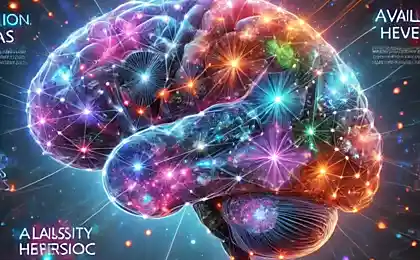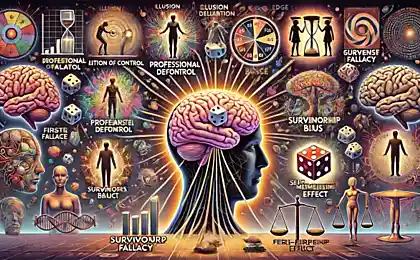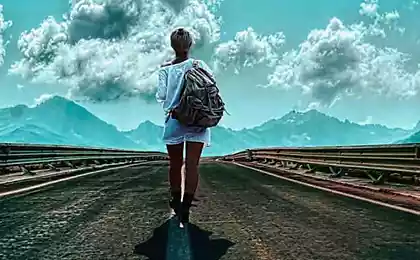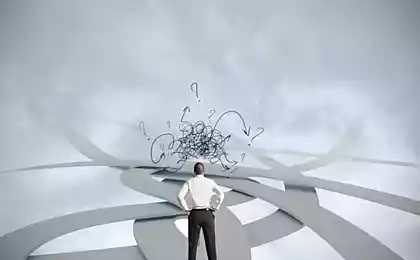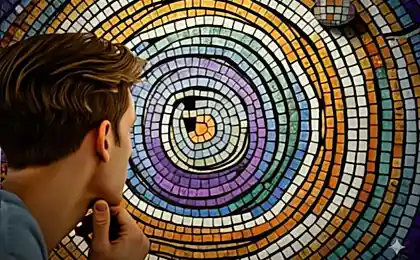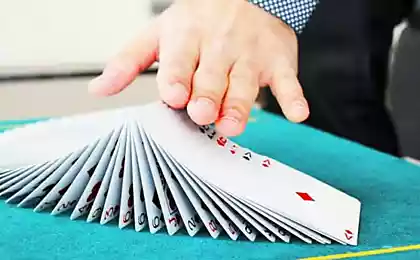485
11 cognitive distortions that do not allow us to think rationally

The human brain is able to perform 1016 operations per second. This means that his power is still higher than the power of any of the current computer. But this does not mean that our brain does not exist outside. A simple calculator can handle calculations much better and faster, and memory is often unreliable. Plus, we tend to fall into the trap of his own consciousness, which now and then force us to accept questionable decisions and making false conclusions. In this article we will talk about the eleven such traps or scientifically, the cognitive distortions:
Confirmation biasWe love to agree with people who agree with us. That is why we, basically, visit forums where people gather, share our political views, and communicate with people, tastes and judgments which are similar to ours.
We are nasty individuals, groups of people or websites that make us doubt their own right – the psychologist B. Skinner called this phenomenon “cognitive dissonance”.
This selectivity and leads to “confirmation bias” – we often unconsciously perceive only the information that “feeds” our existing judgments, ignoring or rejecting everything that conflicts with them and threatens to destroy the familiar image of the world. The Internet, by the way, only reinforces this trend.
Intergroup biasIntergroup bias, a phenomenon that is similar to the confirmation bias, which was discussed above. This is a manifestation of our innate need “to feel part of the team.”
Quite strange, but this need is linked to the hormone oxytocin – the so-called “molecule of love”. This neurotransmitter, on the one hand, helps us to create close relations with each other, the other produces the opposite effect towards those who remained outside of our “circle”. It makes us suspicious, scary, and even arrogance towards outsiders.
In the end, intra-group bias leads to overestimation of abilities and values of our own group and underestimate those of whom we are, in fact, have no idea.
The gambler's fallacyIs the tendency to attribute great importance has already occurred events, the confidence that they can somehow influence our future. A classic example is the coin toss. If five consecutive falls tails, the probability that the next roll of the eagle in our consciousness increases. In fact, it is still 50/50.
About the same trap works “positive expectations” inherent in gamers. They think that after a couple of defeats luck just has to turn to face them and the next game will bring them a huge jackpot. Works the same and the misconception of “streaks of luck”.
Post-rationalization shopingovogoEach of us can remember at least one occasion when, after buying something unnecessary, non-working or prohibitively expensive tried to persuade himself that “still it was worth it.” This is the “post-rationalization shopingovogo” – built into our consciousness program, through which we can feel a bit better after you do something obvious nonsense.
This phenomenon is known also under the name “consumer Stockholm syndrome” – a subconscious desire in whatever was to find an excuse for unreasonable purchase – especially if it cost very expensive.
Neglecting probabilityVery few of us are afraid to sit in the car, but most can admit that experiencing awe when coming on Board the plane. Flight, no doubt, completely unnatural for a human condition and is associated with danger.
At the same time almost everyone knows that the chances of dying in a car accident is many times greater than in a plane crash. And yet, our brain refuses to accept this relationship (statistically the odds of dying while traveling by car – 1/84, on the plane – 1/5000). This same phenomenon causes us to be afraid to die at the hands of terrorists, and not think about much more real danger – fall down the stairs or accidentally poisoned, for example.
Selective observationSelective observation is when we suddenly start to see everywhere something new for us. It seems to us that this “something” at a certain point began to pursue us, while in fact it simply escaped our attention.
Example: you buy a new car and from that moment begin to see the same cars everywhere. The same happens with pregnant women who suddenly start to notice around him a large number of other pregnant women. It can be any song or rarely used expression. Whatever it is, the reason is not that a particular phenomenon has become increasingly occur and that you were more likely to pay attention to it. Hence arises the confidence that the similarity of any of the events or phenomena “cannot be coincidence” (although in fact it is even possible).
The effect of the negativityPeople tend to pay more attention to bad news – and this does not mean the presence of psychological abnormalities. Scientists believe that we subconsciously perceive bad news as more important. Also, bad news makes us more confidence – perhaps because good seem too suspicious (or boring).
The writer and psychologist Steven Pinker, for example, argues in his book that the crimes, atrocities and wars in the world are gradually becoming less and less, although most people believe that the situation from year to year only getting worse – a perfect example of how the effect of negativity.
Effect crazeWe love to move along with the crowd, although they may not realize. When people around us choose a favorite, the part of our brain that is responsible for the individual is disabled. We fall into a kind of “group think”.
For example, the thing that most of your colleagues will think “cool” is much more likely to be the object of desire for you. Well, or in sports – if most of your surroundings ill for any team, it's hard not to succumb to the universal passion.
The effect of the transferIs a tendency to assume that other people think the same as we are. This effect is similar to the effect of “false consensus” – an unfounded confidence that the surrounding default agree with us.
The effect of the transfer is to reevaluate our own “normality” or “typicality”. For example, often people belonging to the radical Association live with the conviction that outside of their group lots of people share their beliefs, although such may not be.
The effect of the momentWe barely correlated “yourself today” with “tomorrow”, so often allow ourselves to do what you like today, leaving the rap for this fleeting pleasure “of those who will later.” During research conducted in 1998, for example, 74% of buyers, choosing food for a week, prefer healthy fruits. And when they were asked to make a choice for the current day, the hands 70% of the participants in the experiment were drawn to chocolate.
The effect of the anchor, This effect is called the “trap of comparison.” It is linked to our tendency to compare numbers (to navigate) whilst keeping an attention to their real value. This focus is actively used by sellers.
Classic example – the goods on sale. We can see on the tag two prices and evaluate the difference between them, not the prices. If “discount” is significant, it produces on us the impression, even if the product is actually too expensive and discount.
This technique is used and restaurants they include in the menu prohibitively expensive meals to the price of others, by comparison, seemed quite reasonable. For this reason, we are making a choice, often choose something in between – not too expensive but not the cheapest. published
Source: mixstuff.ru
Viagrarush is the most beautiful canyon in the world
Incredibly sad for the cat entertains himself with a piece of paper (video)
